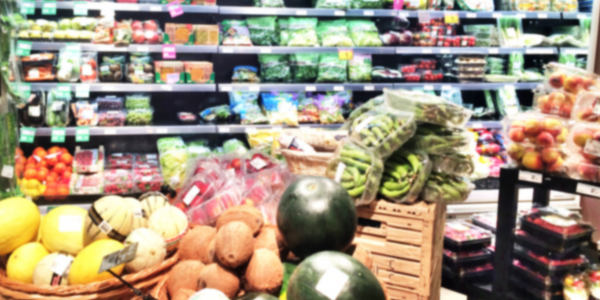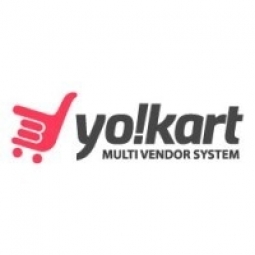技术
- 功能应用 - 企业资源规划系统 (ERP)
- 平台即服务 (PaaS) - 应用开发平台
适用行业
- 玻璃
- 零售
适用功能
- 采购
- 销售与市场营销
用例
- 库存管理
- 实时定位系统 (RTLS)
服务
- 系统集成
关于客户
该客户是一家世界领先的酿酒公司,寻求彻底改变非洲分散的酒类分销市场。他们的目标是通过打破大型运营商的垄断,为终端客户(包括夫妻店、小酒馆和小型啤酒咖啡馆)提供公平的价格。客户希望开发一个 B2B 酒类销售平台,该平台将集成各种功能和系统,以确保价格透明度和公平交易行为。他们聘请 FATbit Technologies 开发该平台,目标是提高市场份额和覆盖范围,并提高客户满意度。
挑战
该客户是一家领先的啤酒公司,正在努力应对非洲分散的酒类分销市场中价格透明度的挑战。价格缺乏透明导致价格歧视和终端客户的不满,包括夫妻店、小酒馆和小型啤酒咖啡馆。市场动态使得小型企业的响应能力较弱,导致市场份额和覆盖范围较低。白酒垄断权集中在少数大经营者手中,限制了小企业的价格选择。客户寻求开发B2B酒类销售平台,为终端客户提供公平的价格,打破大运营商的垄断。
解决方案
FATbit Technologies为客户开发了B2B酒类销售平台,集成了各种功能和系统,以确保价格透明度和公平交易行为。该解决方案包括通过 Dell Boomi 和 IBM API Connect 进行的卖家 ERP 集成、实时价格比较、篮子价格比较、通过 Microsoft Power BI 进行的高级报告、忠诚度计划平台集成、销售点 (POS) 系统集成、退货管理、高级水平折扣、促销、卖家 ERP 的实时库存管理、目录和库存批量上传以及自动调查。该团队首先了解现有线下设置中买家和卖家的核心步骤。然后,他们推出了最小可行产品(MVP),并根据收到的反馈经过几次冲刺对其进行了完善。随后,MVP 演变为全面的产品,使用 Dell Boomi 和 IBM API Connect 集成了不同的 ERP 系统。该团队还集成了 Microsoft Power BI,以通过 Octopus Deploy 实现丰富的报告和自动化部署。
运营影响
数量效益

Case Study missing?
Start adding your own!
Register with your work email and create a new case study profile for your business.
相关案例.

Case Study
Improving Production Line Efficiency with Ethernet Micro RTU Controller
Moxa was asked to provide a connectivity solution for one of the world's leading cosmetics companies. This multinational corporation, with retail presence in 130 countries, 23 global braches, and over 66,000 employees, sought to improve the efficiency of their production process by migrating from manual monitoring to an automatic productivity monitoring system. The production line was being monitored by ABB Real-TPI, a factory information system that offers data collection and analysis to improve plant efficiency. Due to software limitations, the customer needed an OPC server and a corresponding I/O solution to collect data from additional sensor devices for the Real-TPI system. The goal is to enable the factory information system to more thoroughly collect data from every corner of the production line. This will improve its ability to measure Overall Equipment Effectiveness (OEE) and translate into increased production efficiencies. System Requirements • Instant status updates while still consuming minimal bandwidth to relieve strain on limited factory networks • Interoperable with ABB Real-TPI • Small form factor appropriate for deployment where space is scarce • Remote software management and configuration to simplify operations

Case Study
Digital Retail Security Solutions
Sennco wanted to help its retail customers increase sales and profits by developing an innovative alarm system as opposed to conventional connected alarms that are permanently tethered to display products. These traditional security systems were cumbersome and intrusive to the customer shopping experience. Additionally, they provided no useful data or analytics.

Case Study
How Sirqul’s IoT Platform is Crafting Carrefour’s New In-Store Experiences
Carrefour Taiwan’s goal is to be completely digital by end of 2018. Out-dated manual methods for analysis and assumptions limited Carrefour’s ability to change the customer experience and were void of real-time decision-making capabilities. Rather than relying solely on sales data, assumptions, and disparate systems, Carrefour Taiwan’s CEO led an initiative to find a connected IoT solution that could give the team the ability to make real-time changes and more informed decisions. Prior to implementing, Carrefour struggled to address their conversion rates and did not have the proper insights into the customer decision-making process nor how to make an immediate impact without losing customer confidence.

Case Study
Ensures Cold Milk in Your Supermarket
As of 2014, AK-Centralen has over 1,500 Danish supermarkets equipped, and utilizes 16 operators, and is open 24 hours a day, 365 days a year. AK-Centralen needed the ability to monitor the cooling alarms from around the country, 24 hours a day, 365 days a year. Each and every time the door to a milk cooler or a freezer does not close properly, an alarm goes off on a computer screen in a control building in southwestern Odense. This type of alarm will go off approximately 140,000 times per year, equating to roughly 400 alarms in a 24-hour period. Should an alarm go off, then there is only a limited amount of time to act before dairy products or frozen pizza must be disposed of, and this type of waste can quickly start to cost a supermarket a great deal of money.

Case Study
Supermarket Energy Savings
The client had previously deployed a one-meter-per-store monitoring program. Given the manner in which energy consumption changes with external temperature, hour of the day, day of week and month of year, a single meter solution lacked the ability to detect the difference between a true problem and a changing store environment. Most importantly, a single meter solution could never identify root cause of energy consumption changes. This approach never reduced the number of truck-rolls or man-hours required to find and resolve issues.








